Dogali, a very unique protected cruiser:
Dogali was a protected cruiser built for the Regia Marina in Britain, and first warship equipped with triple-expansion engines. She was originally ordered by the Greek Navy as Salamis, but after a payment default, resold to the Regia Marina before completion, renamed for the Battle of Dogali. In addition to her six 6 in her speed of 19.66 knots (36.41 km/h; 22.62 mph) on sea trials, made her the fastest protected cruiser of the time. Apart a visit to the US in 1893 (World’s Columbian Exposition) she had an uneventful career until sold in January 1908 to Uruguay as “25 de Agosto” (later Montevideo), discarded in 1914 but only sold for BU in 1932.
Design
Dogali was designed by British naval architect William Henry White for the Greek Navy as its flagship. A commission was sent in 1884 to collect the best proposals after a call for tenders and French yards were also contacted. Eventually White, one of the most famous naval architect in Britain at the time and DNC in 1885, won the tender and passed on the design to the Armstrong Whitworth shipyard at Elswick for construction after it was approved. White which retied in 1902 over 16 years would design 43 battleships, 26 armoured cruisers, 102 protected cruisers and 74 unarmoured warships, a remarkable achievement. The “Salamis” was at the time typical of small, well armoured cruisers that could deter a potential adversary for a small fleet as a relatively low cost.
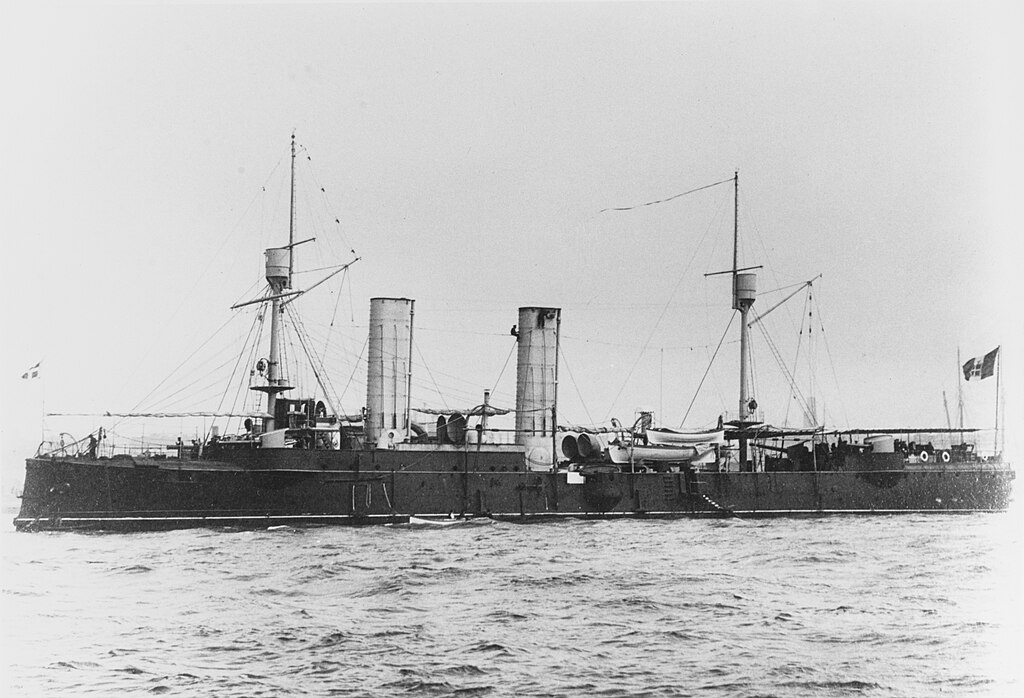
She was a one-off, but White’s proposal to the Greeks was to install for the first time Vertical Triple expansion engines, still largely untested at the time at that scale, but already used on smaller vessels. It was accepted in part due to the promises of speed, but the constraints in size meant the ratio was not favourable, although it later impressed the Italians for her to speed on trials. In between indeed, soon after she was launched on 23 December 1885, the Greeks defaulted on the payment due to the inability to secure the funds at home, due to eventual parliamentary opposition. The yard was still confident to resell the now unnamed cruiser, after briefly consulting the Royal Navy, which expressed no interest. There were no shortage of foreign missions in Britain always looking for opportunities. This was the case for Italy, with the Regia Marina was just starting to build a fleet of armoured cruisers in Britain (such as the larger Etna class). The name “dogali” was secured and construction proceeded to completion after a delay of nearly two years, on 28 April 1887. By the time VTE were no longer a novelty and her stop speed as a cruiser was already beaten.
Layout and protection
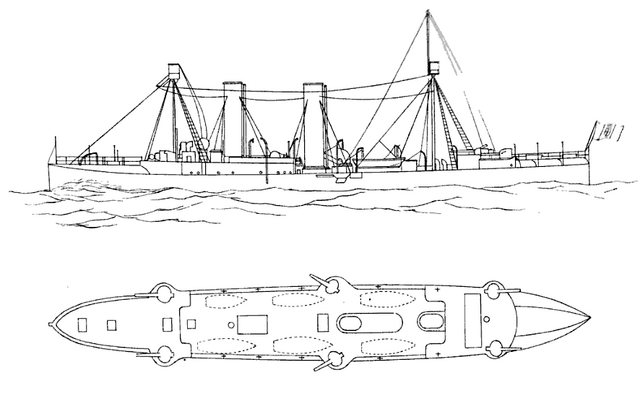
The Dogali was still a small cruiser, which the Italian tought useful as a station cruiser. She was indeed only 76.2 meters (250 ft) long for a generous beam of 11.28 m (37 ft) and draft of 4.42 m (14 ft 6 in). This made for a ratio of 1:7. This was good for stability and agility, less to achieve stellar top speeds. She displaced 2,050 long tons (2,080 t) standard (evaluated so). A classic design with a forecastle and sterncastle, main battery on the weather deck in sponsons on three pairs (two fore and aft), she had two tall funnels, raked, as her two pole masts, and originally, a sailing rig of the schooner type, later removed. The masts also had small armored spotting tops fore fire direction and just daily watch. She had a crew of 224 officers and enlisted men, later increased to 247. She also had for them six boats over the battery deck under davits.
Protection was not impressive, especially compared to other protected cruisers of the time: She had an armored deck 50 mm (2 in) thick whether on the side slopes and central flat section. She also had a conning tower with also 50 mm of armor plating. The main guns were all protected by 110 mm (4.3 in) thick gun shields, as they were exposed. But you already guessed it, with such heavy guns mounted in pairs on both the forecastle and sterncastle, stability was questionable, despite the beam ration and buoyancy.
Powerplant
Dogali was powered as said above by the novelty of a pair of triple-expansion engines, the first set ever installed in a warship. Previously only liners experimented it but White was confident it was a step forward for the Navy and wanted notably to demonstrate it to the RN. The VTE soon was more largely adopted and became standard until turbines took over after a long transiton from the 1890s to the 1900s. Steam came from four coal-fired cylindrical fire-tube boilers. They were trunked into two tall funnels on the centerline. These engines produed in common a total of 5,012 indicated horsepower (3,737 kW). This made later for a top speed in service of 17.68 knots (32.74 km/h; 20.35 mph). But on trials, these engines were pushed to 7,179 ihp (5,353 kW) to produce 19.66 knots (36.41 km/h; 22.62 mph), so fairly short of 20 knots, unheard offor a cruiser. Dogali could cruise over 4,000 nautical miles (7,400 km; 4,600 mi) at 10 knots (19 km/h; 12 mph), carrying coal 430t of coal. But she was taunted by Elswick on its largely distributed flyers, as among the fastest cruisers in the world. A title she did not kept long and was of little use in her career.
Armament
Despite her small size, reached by many destroyers ten years later, she was well armed with six 152-millimeter (6 in) L/32 guns on individual sponsoned positions, two forward, two astern, tow on the lower battery deck amidships, covering the broadside but still able to fire forward and aft. These were Pattern M Armstrong Whitworth, weighing 2 t (2.0 long tons; 2.2 short tons) apiece and unique to the needs of the Greek Navy originally.
They were supplemented nine 57 mm (2.24 in) L/40 Hotchkiss guns, plus six 5-tubes 11.4mm/94 repeating Gatling guns for close quarter defence. Location of the first was mostly on the broadsides of the main battery gun, and two on the sterncastle.
She also had four 356 mm (14 in) torpedo tubes furing the Whitehead Mark I.
Dogali specs |
|
| Displacement | 2,050 long tons (2,080 t) |
| Dimensions | 76.2 x 11.28 x 4.42 (250 x 37 x 14 ft 6 in) |
| Propulsion | 2 shafts, two VTE engines, 4 FT boilers, 5,012 shp |
| Speed | 17.68 knots (32.74 km/h; 20.35 mph) |
| Range | 4,000 nmi (7,400 km; 4,600 mi) at 10 knots (19 km/h; 12 mph) |
| Armament | 6 × 152 mm, 9 × 57 mm, 6 × Gatling guns, 4 × 356 mm TTs |
| Armor | Deck: 50 mm, CT 50 mm, Gun shield 110mm |
| Crew | 224-247 |
Career of Dogali
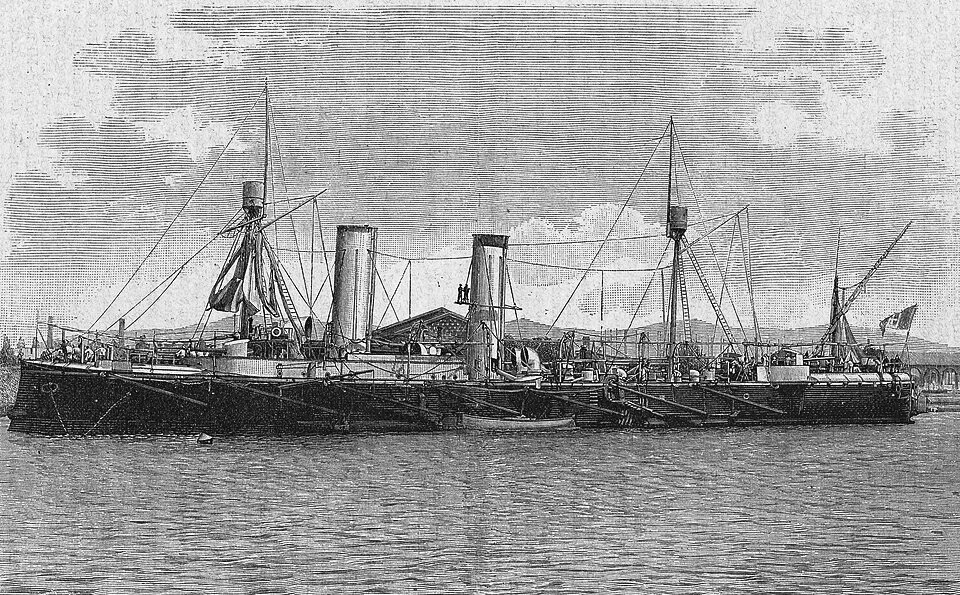
Her keel was laid down on 13 February 1885, launched on 23 December as “Angelo Emo” and then Dogali as she was commissioned on 28 April 1887. On 10 June she took part in the Regia Marina’s annual fleet maneuvers. With the torpedo cruiser Folgore, she was assigned to the “defending squadron” i support of the ironclads Enrico Dandolo, Palestro, Castelfidardo, and Affondatore. She was to be capable of attack and defending the Strait of Messina. This ended with a fleet review by King Umberto I on 21 June 1887. In 1890 she took part in the annual fleet maneuvers in the First Squadron attached to the ironclad Lepanto, protected cruiser Piemonte and torpedo boats. Exercises proceeded in the Tyrrhenian Sea with a scenario where they needed to defend the approachs of Italy against an attacking “hostile” squadron fro the West.
Dogali and Etna as well as Giovanni Bausan represented Italy later at the international naval review in New York, part of the World’s Columbian Exposition started in Chicago in 1893. The Exposition marked the 400th anniversary of Columbus’s arrival. A formidable naval review als included French, German, Britsih, Spanish vessels as well as from other nations.
Later in 1893 Dogali and Giovanni Bausan were in Rio de Janeiro during the Revolta da Armada (Revolt of the Fleet) with other cruisers, including from Argentina to watch oveer their own citizen’s safety, ready to send a landing party.

She returned to Italy later that year to be assigned to the 3rd Department stationed in Venice until late 1894, in charge of the Adriatic and facing the Austro-Hungarian Navy. On 1 February 1897, Dogali was reassigned to the Cruiser Squadron with Marco Polo, Umbria and Liguria and later she cruised off the eastern coast of South America with Umbria. She left this Squadron in 1903, and joined a second division squadron with the cruisers Vettor Pisani, Giovanni Bausan and Etruria.
In 1906, she was back cruising in North American waters. She needed repairs at Pensacola Navy Yard due to her old engines. Later she took part in a ceremony in Capitán Pastene, Chile, as the city celebrtaed her 100th year after being founded by Italian immigrants. In January 1908, she was considered for decommission due to her age, but she was eventually sold to Uruguay. The latter took over the ship for a recommission as their flagship, named “25 de Agosto”, the date of independence. She remained the largest warship in the Uruguayan Navy until 1910, renamed “Montevideo” after the capital and ultimately decommissioned in 1914, but still used as a traning hull and depot ship, listed in the inventory until 1932, and then sold for scrap.
Links
Specs Conway’s all the world fighting ships 1860-1905.
https://www.navypedia.org/ships/italy/it_cr_dogali.htm
https://www.marina.difesa.it/noi-siamo-la-marina/pilastro-operativo/mezzi/mezzi-storici/Pagine/ABCD/dogali.aspx
https://it.wikipedia.org/wiki/Dogali_(ariete_torpediniere)
https://www.tynebuiltships.co.uk/D-Ships/dogali1887.html
https://www.history.navy.mil/our-collections/photography/numerical-list-of-images/nhhc-series/nh-series/NH-92000/NH-92037.html
https://en.wikipedia.org/wiki/Italian_cruiser_Dogali



 Latest Facebook Entry -
Latest Facebook Entry -  X(Tweeter) Naval Encyclopedia's deck archive
X(Tweeter) Naval Encyclopedia's deck archive Instagram (@navalencyc)
Instagram (@navalencyc)


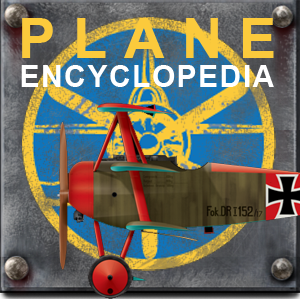
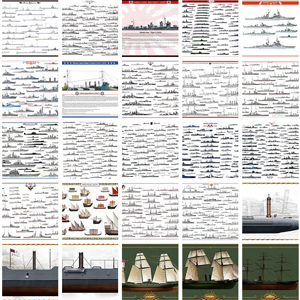

 French Navy
French Navy Royal Navy
Royal Navy Russian Navy
Russian Navy Armada Espanola
Armada Espanola Austrian Navy
Austrian Navy K.u.K. Kriegsmarine
K.u.K. Kriegsmarine Dansk Marine
Dansk Marine Nautiko Hellenon
Nautiko Hellenon Koninklije Marine 1870
Koninklije Marine 1870 Marinha do Brasil
Marinha do Brasil Osmanlı Donanması
Osmanlı Donanması Marina Do Peru
Marina Do Peru Marinha do Portugal
Marinha do Portugal Regia Marina 1870
Regia Marina 1870 Nihhon Kaigun 1870
Nihhon Kaigun 1870 Preußische Marine 1870
Preußische Marine 1870 Russkiy Flot 1870
Russkiy Flot 1870 Svenska marinen
Svenska marinen Søværnet
Søværnet Union Navy
Union Navy Confederate Navy
Confederate Navy Armada de Argentina
Armada de Argentina Imperial Chinese Navy
Imperial Chinese Navy Marinha do Portugal
Marinha do Portugal Mexico
Mexico Kaiserliche Marine
Kaiserliche Marine 1898 US Navy
1898 US Navy Sovietskiy Flot
Sovietskiy Flot Royal Canadian Navy
Royal Canadian Navy Royal Australian Navy
Royal Australian Navy RNZN Fleet
RNZN Fleet Chinese Navy 1937
Chinese Navy 1937 Kriegsmarine
Kriegsmarine Chilean Navy
Chilean Navy Danish Navy
Danish Navy Finnish Navy
Finnish Navy Hellenic Navy
Hellenic Navy Polish Navy
Polish Navy Romanian Navy
Romanian Navy Turkish Navy
Turkish Navy Royal Yugoslav Navy
Royal Yugoslav Navy Royal Thai Navy
Royal Thai Navy Minor Navies
Minor Navies Albania
Albania Austria
Austria Belgium
Belgium Columbia
Columbia Costa Rica
Costa Rica Cuba
Cuba Czechoslovakia
Czechoslovakia Dominican Republic
Dominican Republic Haiti
Haiti Hungary
Hungary Honduras
Honduras Estonia
Estonia Iceland
Iceland Eire
Eire Equador
Equador Iran
Iran Iraq
Iraq Latvia
Latvia Liberia
Liberia Lithuania
Lithuania Mandchukuo
Mandchukuo Morocco
Morocco Nicaragua
Nicaragua Persia
Persia San Salvador
San Salvador Sarawak
Sarawak Uruguay
Uruguay Venezuela
Venezuela Zanzibar
Zanzibar Warsaw Pact Navies
Warsaw Pact Navies Bulgaria
Bulgaria Hungary
Hungary

 Bundesmarine
Bundesmarine Dutch Navy
Dutch Navy Hellenic Navy
Hellenic Navy Marina Militare
Marina Militare Yugoslav Navy
Yugoslav Navy Chinese Navy
Chinese Navy Indian Navy
Indian Navy Indonesian Navy
Indonesian Navy JMSDF
JMSDF North Korean Navy
North Korean Navy Pakistani Navy
Pakistani Navy Philippines Navy
Philippines Navy ROKN
ROKN Rep. of Singapore Navy
Rep. of Singapore Navy Taiwanese Navy
Taiwanese Navy IDF Navy
IDF Navy Saudi Navy
Saudi Navy Royal New Zealand Navy
Royal New Zealand Navy Egyptian Navy
Egyptian Navy South African Navy
South African Navy






























 Ukrainian Navy
Ukrainian Navy dbodesign
dbodesign